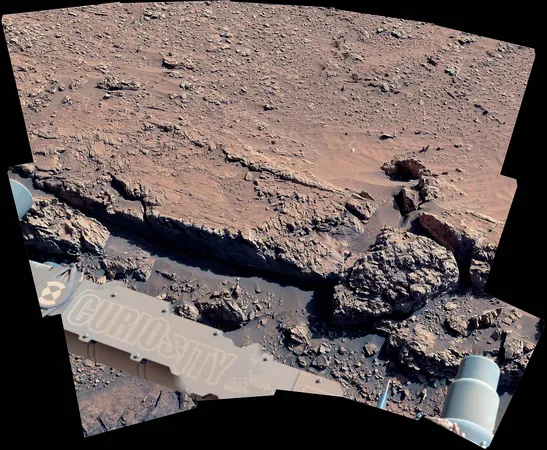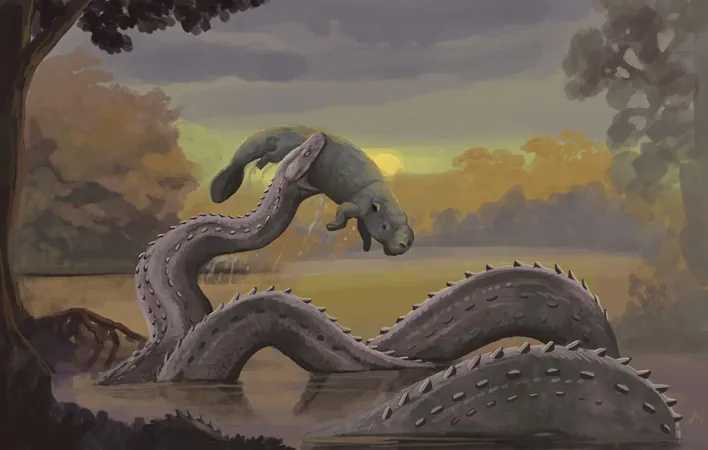
Mysterious Ridges on Mars Unveil Secrets of Its Past
2025-06-29
Author: Jacob
Unraveling the Enigma of Mars' Boxwork Patterns
NASA's Mars Curiosity rover has stumbled upon a remarkable discovery: a new terrain adorned with bizarre rock formations known as "boxwork patterns." These enigmatic criss-crossing ridges, unique to the Red Planet, have sparked curiosity and raised intriguing questions about Mars' ancient history.
A Clue to Mars' Watery Past?
Once a vibrant world teeming with rivers, lakes, and possibly even oceans, Mars has long since transformed into a frigid desert. New findings suggest, however, that water might have persisted underground, even after the planet's surface waterways vanished.
Delving into the Boxwork Ridges
At the heart of Gale Crater, the Curiosity rover has been investigating these fascinating boxwork patterns. By the time this geological formation emerged, the region's lakes had already dried up. Yet, evidence reveals that groundwater was still active.
The rover uncovered short, intersecting ridges believed to have formed when minerals seeped into rock fractures, solidifying as water flowed through. Over time, Martian winds eroded the softer surrounding rock, leaving behind the sturdy, cement-like ridges.
Mount Sharp: A Geological Time Capsule
Stretching along the slopes of Mount Sharp—a towering three-mile-high mountain Curiosity has been scaling since 2014—these ridges raise a puzzling question: Why do they appear only in this specific area? Curiosity project scientist Ashwin Vasavada is determined to uncover the dynamics behind these formations.
Layers of Mars: A Historical Narrative
Mount Sharp is a geological archive, with rock strata narrating the various epochs of Mars' climate. As Curiosity ascends, it traverses through time from wetter habitats at its base to the arid conditions higher up.
Currently, the rover is navigating a layer abundant in magnesium sulfates—mineral signatures of a drying climate. Just when scientists thought they had pieced together the puzzle, Curiosity discovered something unexpected: the bedrock between the boxwork ridges has a different chemical signature, showcasing white streaks of calcium sulfate, hinting at a previous aqueous past.
Clues About Life on Mars?
To decode these mysteries, Curiosity recently drilled into a rock called "Altadena." The extracted powder will undergo detailed chemical analysis, allowing scientists to compare this terrain with ancient layers. They are particularly hopeful that samples from the boxwork patterns could unveil traces of organic molecules, potentially indicating past life.
Drawing Parallels with Earth
Curiosity isn’t just investigating; it’s also naming its surroundings to help catalog its findings. Initially, the rover adopted naming conventions from places in California near the Jet Propulsion Laboratory. However, as it ventures into new Martian territories, the theme has shifted to names inspired by Earth’s driest spots, like Bolivia’s Salar de Uyuni and Chile’s Atacama Desert, both studied for their parallels to Mars.
The Search Continues
Yet, even with these revelations, questions linger. Why are the boxwork patterns limited to this area? What does the resurgence of calcium sulfate veins mean? And what narrative does this mineral landscape convey about the final days of water on Mars?
With each sample, image, and ridge explored, Curiosity inches closer to unveiling Mars' history—and perhaps, the hints of life once lurking beneath its surface.









 Brasil (PT)
Brasil (PT)
 Canada (EN)
Canada (EN)
 Chile (ES)
Chile (ES)
 Česko (CS)
Česko (CS)
 대한민국 (KO)
대한민국 (KO)
 España (ES)
España (ES)
 France (FR)
France (FR)
 Hong Kong (EN)
Hong Kong (EN)
 Italia (IT)
Italia (IT)
 日本 (JA)
日本 (JA)
 Magyarország (HU)
Magyarország (HU)
 Norge (NO)
Norge (NO)
 Polska (PL)
Polska (PL)
 Schweiz (DE)
Schweiz (DE)
 Singapore (EN)
Singapore (EN)
 Sverige (SV)
Sverige (SV)
 Suomi (FI)
Suomi (FI)
 Türkiye (TR)
Türkiye (TR)
 الإمارات العربية المتحدة (AR)
الإمارات العربية المتحدة (AR)